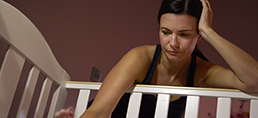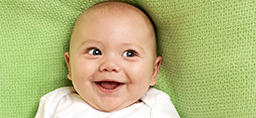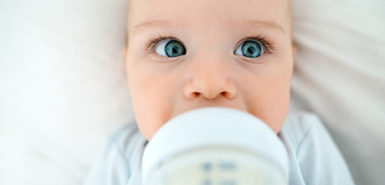
With our second daughter, who had breastmilk jaundice, people would comment about her beautiful skin tone.
I’d reply, “Look at her father and I—that’s not her normal color!” Yes, we’re a pretty pale bunch.
Why is my baby yellow?
Jaundice is the yellow color you may notice in your newborn baby. Sometimes you will even notice it in the whites of their eyes, which becomes yellow.
This yellowing comes from bilirubin, the substance left over from breaking down red blood cells. This occurs because the liver is still immature and can’t break down the bilirubin fast enough.
It’s more common in preemie babies and some breastfed babies, as was the case with our second daughter. In most cases, it disappears in two to three weeks.
The placenta takes care of the waste when the baby is inside, including breaking down the excess bilirubin. After delivery, the excess bilirubin is excreted through the baby’s urine and bowel movements.
How common is it?
Jaundice is noticed to some degree in most babies. The March of Dimes says about 60 percent of babies have jaundice. At Spectrum Health Gerber Memorial and most of the other Spectrum Health hospitals, all babies are tested before they go home.
What can I do?
The American Pediatric Association addresses 10 important points about jaundice, but I’ll list just a few of them here.
- Clinicians should promote successful breastfeeding. As we know already, this is the best approach for any baby. Breastfeeding often helps baby pass the jaundice through his urine and stool—so feed your baby often!
- Don’t just visually assess the color of your baby. Instead, do a bilirubin test to know for sure if there is concern.
- Treat newborns with phototherapy when needed. Phototherapy uses light that emits blue wavelengths to break down the jaundice.
Sunlight?
Our oldest son also had jaundice. He looked yellow and he would not arouse to nurse.
Nurses checked his bilirubin level and found it high enough to merit phototherapy. He spent five nights “under the lights,” as they say, which included one night in the hospital and four at home. His eyes had to be covered to protect them.
When a newborn needs light therapy at home these days, a wrap outfitted with lights can be used over most of the baby’s body. This does the same thing as the lights—it’s often called a bili-wrap or bili-blanket.
You may also have heard about cases where a baby’s doctor suggests putting the baby near a window in the sunlight. In countries that don’t have electricity, or dependable electricity, this is often a way doctors can treat babies who have jaundice.
In a Nigerian study involving 450 jaundiced babies, researchers selected half to undergo exposure to sunlight, but with a canopy of commercial plastic film. This film filtered out the sun’s ultraviolet rays but still allowed the blue wave to get through.
The findings showed that filtered sunlight was effective on 93 percent of treatment days, while the conventional phototherapy was successful 90 percent of treatment days.
As I mentioned, our daughter had breast milk jaundice, which lasted about 10 weeks. Though she had a bit of a golden tone, her bilirubin levels were fine and nothing needed to be done medically.
The term breastfeeding jaundice came about in 1963. It develops anywhere from four to seven days after birth and lasts longer than more common jaundice. There are no lasting concerns with this condition.
If you’re a mom who is worried about jaundice in your newborn, you can rest assured—it’s a common condition and it’s entirely treatable.
 /a>
/a>
 /a>
/a>
 /a>
/a>